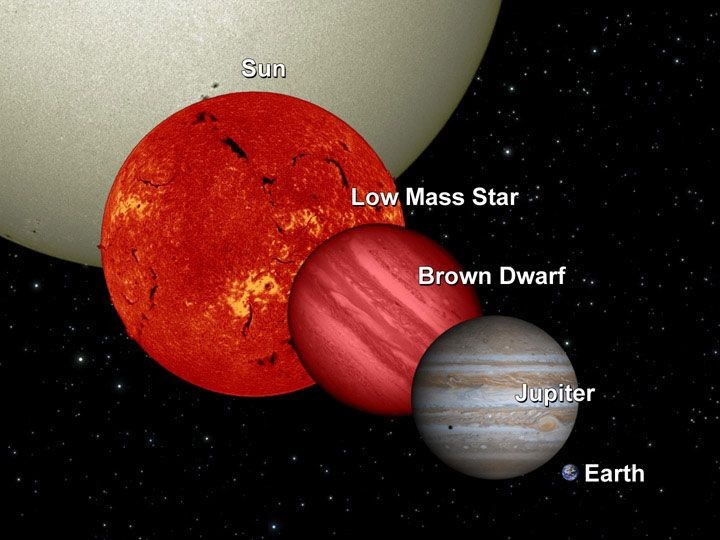 |
| 1. Brown dwarfs are known as “failed stars.” Brown dwarfs don’t have enough mass to sustain the fusion of hydrogen into helium in their cores, the process that makes stars shine. So they only emit very faint light and are sometimes mistaken for large planets. Photo: Pinterest. |
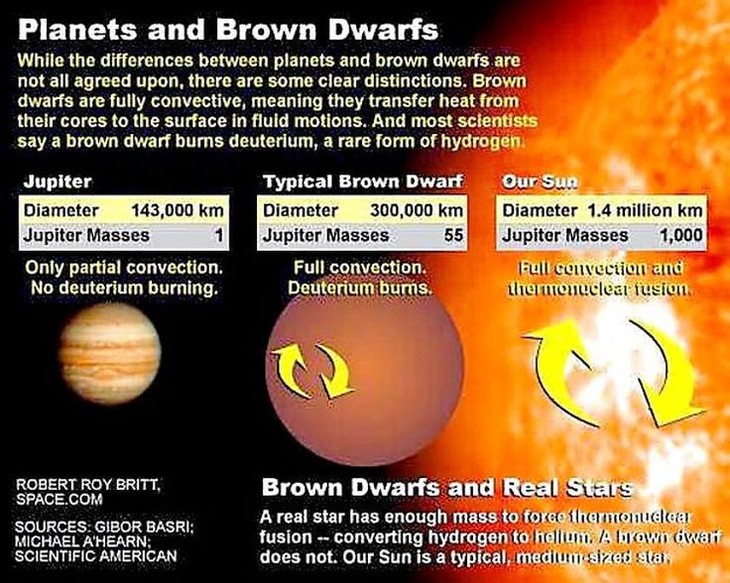 |
| 2. They have masses between planets and stars. Brown dwarfs are more massive than giant planets like Jupiter but smaller than the smallest stars. They typically range in mass from 13 to 80 times that of Jupiter – the minimum limit for a celestial body to be considered a true star. Photo: Pinterest. |
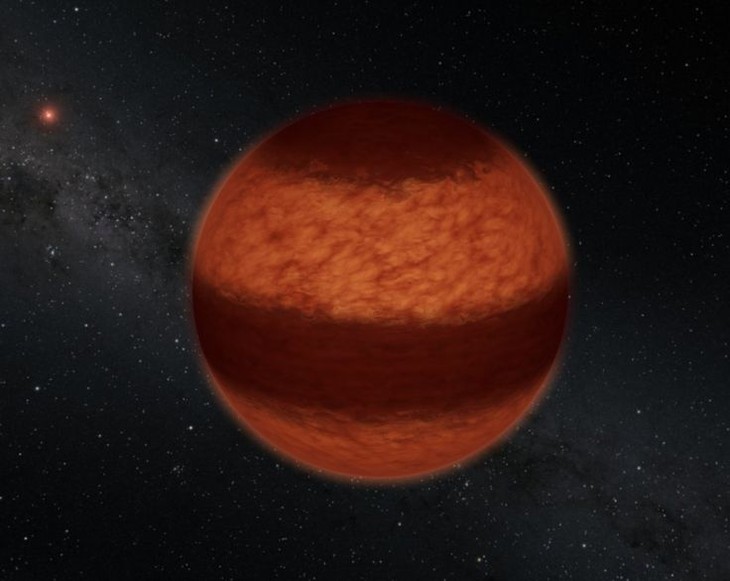 |
| 3. Some brown dwarfs can emit a faint light. Although they don't have enough energy to shine brightly like stars, some brown dwarfs can still emit a faint light thanks to the fusion of deuterium (an isotope of hydrogen) or leftover heat from the formation process. Photo: Pinterest. |
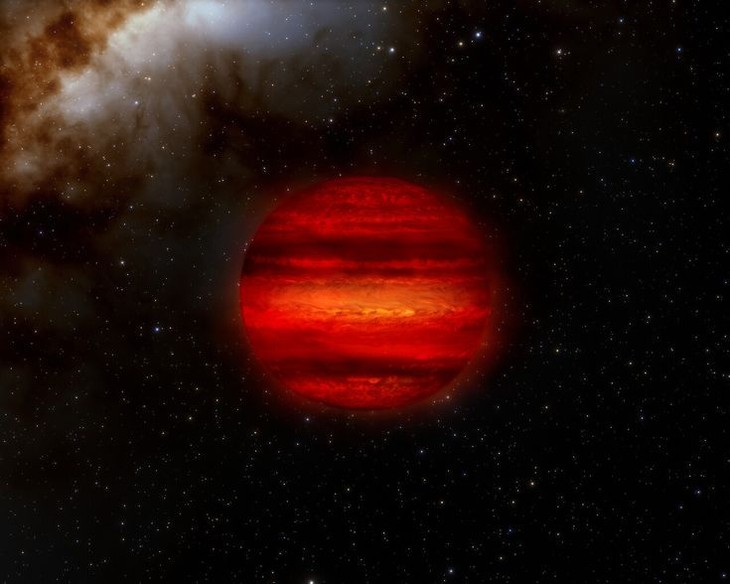 |
| 4. They are often detected using infrared light. Because they emit very little visible light, brown dwarfs are mainly observed through infrared radiation - a form of energy emitted by heat. Infrared telescopes, such as Spitzer or James Webb, help scientists find many brown dwarfs in the universe. Photo: Pinterest. |
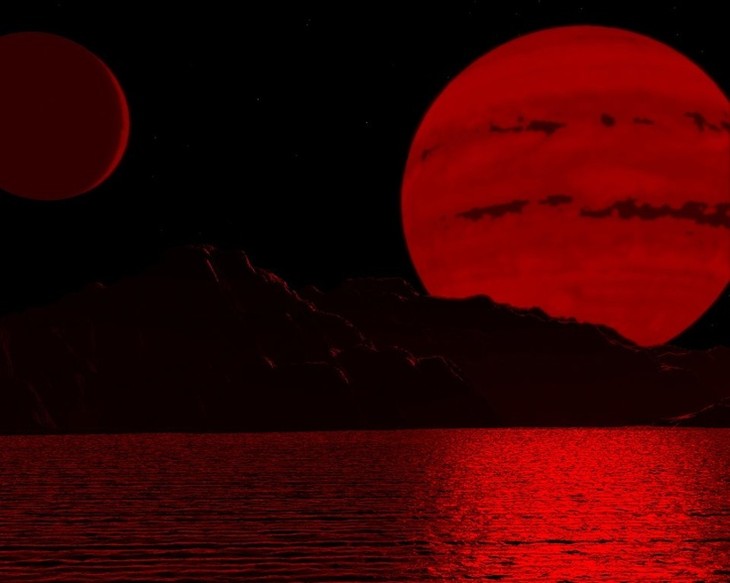 |
| 5. Some brown dwarfs have extreme weather. Studies suggest that brown dwarfs can have storms more powerful than Jupiter, with clouds of silicon and iron floating in their atmospheres. These features make them mysterious and unique celestial bodies. Photo: Pinterest. |
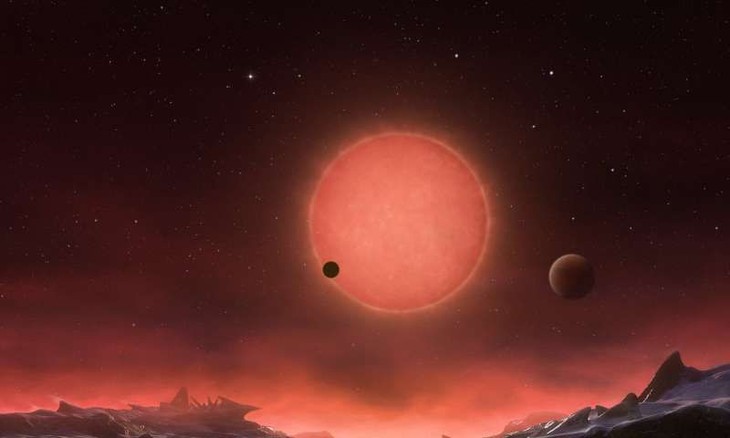 |
| 6. Some brown dwarfs may have planets orbiting them. Although they are not actual stars, brown dwarfs can still have their own planetary systems. Astronomers have found several planets orbiting brown dwarfs, raising the question of whether such systems could support life. Photo: Pinterest. |
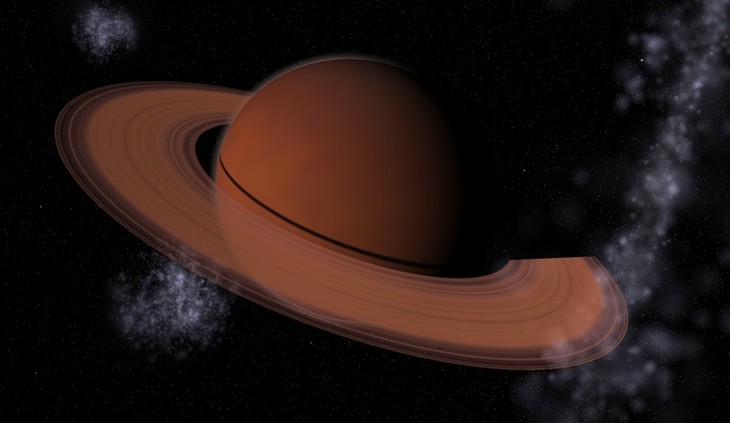 |
| 7. They can live for a very long time. Unlike normal stars, which have a limited lifespan due to fuel exhaustion, brown dwarfs do not go through a period of intense hydrogen burning. This allows them to last for many billions of years without changing much in size or temperature. Photo: Pinterest. |
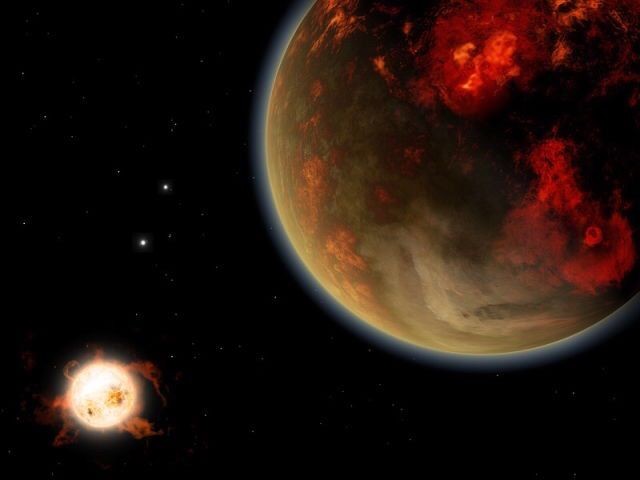 |
| 8. Some brown dwarfs have extremely strong magnetic fields. Although they do not have molten cores like strongly magnetic planets like Earth, many brown dwarfs have extremely strong magnetic fields, even stronger than the Sun. This causes them to emit powerful radio waves, allowing astronomers to detect them from great distances. Photo: Pinterest. |
Dear readers, please watch the video : 10 largest meteorite craters on Earth | Space Science - Science and Discovery.
Source: https://khoahocdoisong.vn/giai-ma-vat-the-ky-di-bi-goi-ngoi-sao-that-bai-cua-vu-tru-post266118.html


![[Photo] Opening of the World Cultural Festival in Hanoi](https://vphoto.vietnam.vn/thumb/1200x675/vietnam/resource/IMAGE/2025/10/10/1760113426728_ndo_br_lehoi-khaimac-jpg.webp)

![[Photo] Ho Chi Minh City is brilliant with flags and flowers on the eve of the 1st Party Congress, term 2025-2030](https://vphoto.vietnam.vn/thumb/1200x675/vietnam/resource/IMAGE/2025/10/10/1760102923219_ndo_br_thiet-ke-chua-co-ten-43-png.webp)


![[Photo] Unique Phu Gia horse hat weaving craft](https://vphoto.vietnam.vn/thumb/1200x675/vietnam/resource/IMAGE/2025/10/10/1760084018320_ndo_br_01-jpg.webp)
























































































Comment (0)